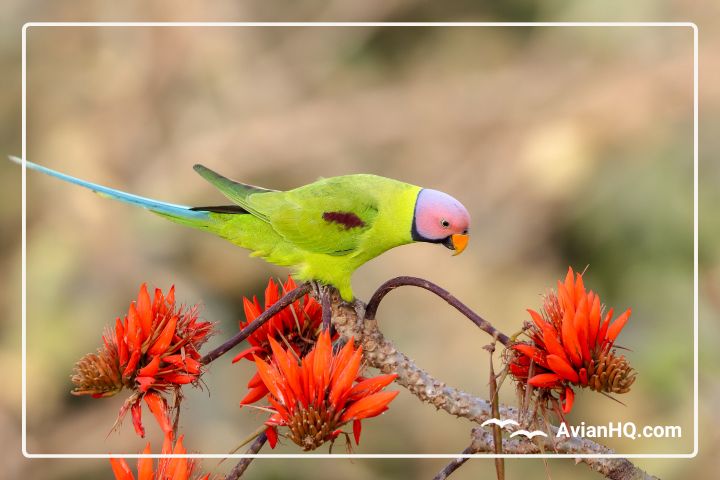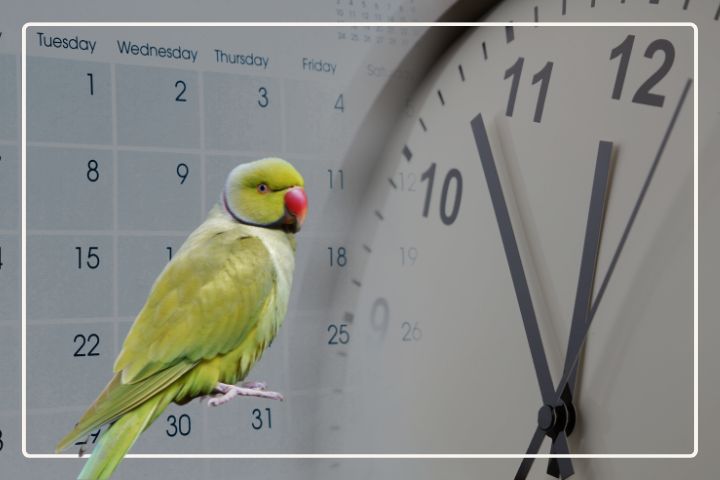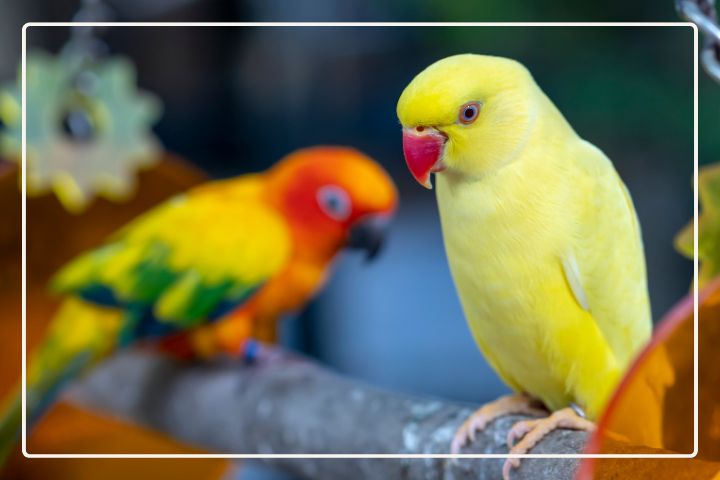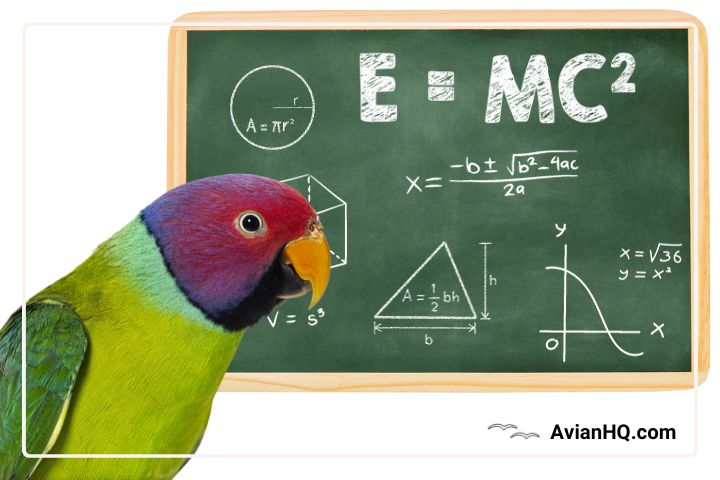The Complete Guide to the Captivating Blossom-headed Parakeet (Psittacula roseata)
The blossom-headed parakeet, also known as the rose-headed parakeet, is a beautiful bird named for the distinctive pink and violet plumage on its head. While a popular pet, this parakeet is facing threats in the wild. Read this guide to learn everything about this charming bird’s characteristics, care as a pet, breeding habits, conservation status, and more fascinating facts.
An Introduction to the Blossom-headed Parakeet
Native to tropical regions of India and Southeast Asia, the blossom-headed parakeet belongs to the large, diverse parrot family. With stunning colors and a sweet, quiet temperament, it’s gained popularity as a pet. However, habitat loss has led to a concerning decline in wild populations.
This guide will provide a comprehensive look at these medium-sized parrots, from how to identify them to breeding and conservation. Whether you’re an ornithology enthusiast, current owner, or prospective pet parent, you’ll find key information about Psittacula roseata.
Names and Classification of the Blossom-headed Parakeet
This parakeet has several common names, including:
- Blossom-headed parakeet
- Rose-headed parakeet
- Eastern blossom-headed parakeet
Its scientific name is Psittacula roseata. It belongs to the Psittaculidae family along with other parakeets and parrots.
There are two recognized subspecies of the blossom-headed parakeet:
Psittacula roseata roseata
Psittacula roseata roseata is the nominate subspecies inhabiting a large swath of the species’ range in India and Southeast Asia. It has vivid reddish-pink head and neck plumage. The back is green with a bluish rump. The beak is coral red.
Psittacula roseata juneae
Psittacula roseata juneae resides in northeastern India, Bhutan, and parts of Myanmar. It is differentiated by having a deeper violet-mauve coloration on the head and neck. The beak is more orange-red in tone. The blue on the rump is more extensive.
While subtle, differences in plumage shading and extent do exist between the roseata and juneae subspecies. There are also slight variations in vocalizations. Both subspecies are popular in aviculture. More research is needed to better understand the evolutionary distinctions between these blossom-headed parakeet subspecies and their geographic boundaries.
The Striking Appearance of Blossom-headed Parakeets
The blossom-headed parakeet is a stunning, medium-sized parrot distinguished by its vivid coloring. The most striking feature is the bright rosy-violet plumage on the head and upper neck. The hindneck displays black barring, creating a striking contrast.
These parakeets reach approximately 11-12 inches (28 to 30 cm) in length from beak tip to tail tip. Their wingspan ranges from 10 to 12 inches (25 to 30 cm). Weight averages 2.5 to 3.3 ounces (70 to 95 grams).
The body has bright emerald green feathers on the back, wings, and chest. The undertail area is yellowish-green. The tail feathers are deep blue with yellow-green tips. Another distinctive marking is the red shoulder patch on the bend of the wing.
The beak is coral red, and the eyes dark brown encircled by whitish eye-rings. Legs are grayish in color.
Males and females look nearly identical, although some claim females have slightly duller head coloring. Juveniles lack the pinkish plumage on the head and neck, which gradually develops as they mature over their first year.
Overall, the vibrant hues and striking contrasts make the blossom-headed parakeet a real head-turner in the parrot world. Its beauty contributes to its popularity as an avian pet.
Distribution and Habitat: Where Blossom-headed Parakeets Live in the Wild
The natural habitat of blossom-headed parakeets is tropical and subtropical regions across India, Southeast Asia, and parts of China. Their range includes:
- India
- Eastern Pakistan
- Southern Nepal
- Bhutan
- Bangladesh
- Myanmar
- Thailand
- Laos
- Vietnam
- Southern China
- Malaysia
- Singapore
- Indonesia
They tend to inhabit lowland forests, woodlands, mangroves, and cultivated areas like orchards and shade trees on farms. Mangoes are among their favorite wild foods.
These parakeets traditionally nest in holes in tall trees. However, they have adapted to also use man-made structures, building nests on buildings, bridges, and electricity poles.
The Active, Social Nature of Blossom-headed Parakeets
Blossom-headed parakeets are energetic, active birds that enjoy frequent exercise by flying and climbing. They have a very social nature, normally living in flocks of 10 to 100 birds.
You can often observe large, noisy flocks flying together and foraging for food. They communicate with a varied array of squawks, chirps, and whistles.
In captivity, this parakeet tends to be quiet and gentle. It can become tame and bonded with its owner. Since it thrives on interaction, it’s not an ideal pet for frequently empty households.
Feeding Behaviors and Dietary Needs
As highly social flocking birds, blossom-headed parakeets forage and feed communally in the wild. Their diet consists mainly of:
- Fruit – Figs, mangoes, berries, and other fruits are favorites. They enjoy citrus fruits as well.
- Flowers – Parakeets drink nectar from flowers of silk cotton, semal, and other blossoming trees.
- Leaves and shoots – New growth, buds, and seed pods of tress like ficus and acacia are eaten.
- Seeds and grain – Grass seeds, rice, wheat, and maize supplements their diet.
- Insects – Occasionally eat insects like termites for essential protein. More common in breeding season.
In captivity, providing a balanced diet is crucial. Feed a quality seed mix along with:
- Pellets to round out nutrition
- Chopped fruits and vegetables – aim for variety and rotate options
- Sprouted seeds and legumes for natural enrichment
- Nutritional supplements like kelp or pollen
- Clean, fresh water always available for bathing and drinking
Monitor food intake and weight. Adjust diet to ensure proper nutrition and health. An occasional treat like nuts or cooked egg can supplement the diet. But moderation is key. Mimic their natural grazing habits by feeding smaller amounts throughout the day. A variety of foods keeps these intelligent parakeets engaged.
The Typical Lifespan of Blossom-headed Parakeets
When properly cared for, blossom-headed parakeets can have quite long lifespans for their size. Their average lifespan is 15 to 25 years. Some may reach 30 years or more with excellent care.
Factors impacting longevity include diet, housing, exercise, veterinary care, and avoiding accidents. Supporting their active, social natures also contributes to a long, healthy life.
Selecting a Healthy Blossom-headed Parakeet
If you’re interested in owning one of these parakeets, select carefully. Visit reputable breeders and bird shops. Look for:
- Smooth, bright plumage lacking bald spots
- Clear, alert eyes
- A strong grip on perches
- Active, inquisitive behavior
- Clean vent area with no discharge
Avoid sickly, inactive, or stressed birds. Purchase from sources that don’t sell wild-caught parakeets.
Best Housing Conditions for Pet Parakeets
Blossom-headed parakeets need roomy, secure housing with these features:
- Large cage, preferably with horizontal orientation
- Varied natural wood perches
- Puzzle toys for mental stimulation
- Dishes for food and water
- Nesting box for resting/sleeping
Place the cage in a bright area without drafts or temperature extremes. Allow several hours per day in a bird-safe room to exercise. Supervise closely when free-flying.
Tips for Taming Your Blossom-headed Parakeet
While naturally social flock birds, blossom-headed parakeets still require dedicated taming and training to become relaxed, friendly pets. With ample patience and persistence, you can bond with your parakeet.
Start by allowing at least a few days for your new parrot to settle into its cage in a quiet room. Introduce yourself gradually with soft talking and treats offered through the bars. Move slowly and let the bird become accustomed to you in its space first.
Initial handling should be brief – a few minutes at a time. Gently scoop the parakeet onto your hand or a perch using a towel or gloves for protection. Reward with a bit of millet spray. Slowly increase handling duration as the bird relaxes.
Multiple short, positive sessions daily are more effective than prolonged, stressful ones. Always end interactions on a good note if possible. Read your parakeet’s body language and don’t force interactions if signs of fear or aggression emerge. Pay attention to when your bird seems most receptive.
Clicker training can rapidly accelerate the taming process. Associate the clicker sound with treats. Click and reward any time the parakeet demonstrates calm behavior or engages with a toy while out. Target training to a stick or finger is also highly effective.
As trust builds, introduce new bonding experiences slowly – brief car rides, sharing fruit, head scratches if accepted. Spend time conversing, singing, and simply sitting quietly near your parakeet’s cage.
Remain patient and let your bird set the pace. With time and dedication, this initially shy parrot will transform into an engaging, trusting companion – well worth the taming investment!
Enriching Your Parakeet’s Environment
In addition to a roomy cage and ample exercise, parakeets need enrichment. Engage their active minds with:
- Rotating variety of puzzle toys
- Shredding/foraging activities like boxes, piñatas
- Different perches – natural branches, rope, etc.
- Mirrors and play gyms for climbing
- Music, bird videos, interacting owners
Rotate new toys weekly. Ensure play areas are parakeet-proof. Interact frequently for an optimally enriched life.
Potential Health Issues to Watch For
While generally hardy, blossom-headed parakeets can develop certain health conditions. Be vigilant for:
- Respiratory infections – discharge, wheezing
- Parasites – check droppings
- Vitamin A deficiency – poor diet, weight loss
- Feather destructive behavior – boredom, stress
- Egg binding in females – needs vet care
Routine vet exams and prompt treatment help prevent serious illness. Know your avian vet options ahead of time.
Essential Supplies for Your Parakeet’s Home
Before bringing home your blossom-headed parakeet, assemble these supplies:
- Appropriately sized cage
- Variety of natural perches – look for different diameters and textures
- Stainless steel food and water bowls
- High quality seed mix – ensure it’s fresh
- Pellets formulated for small parrots
- Assortment of bird-safe treats and toys – look for variety
- Grit for aiding digestion
- Nesting box or sleep hut
- Play gym, branch, or stand for out-of-cage time
Research must-have parakeet products and brands thoroughly. Prep the cage in advance so it’s ready for your new arrival!
Breeding Season for Blossom-headed Parakeets
Timing of breeding for blossom-headed parakeets depends on various environmental cues. In their native tropical ranges, peak breeding normally aligns with monsoons and maximal food availability – typically December through April.
In captivity, factors like diet, habitat, light cycles, and pair bonding impact reproductive timing. Most aviary breeding occurs during late winter into summer. But bonded pairs may potentially reproduce year-round if conditions are optimal.
To stimulate breeding mode, simulate seasonal triggers in the aviary. Increase protein in the diet and provide nesting materials. Calcium supplementation supports egg production. Gradually increase daylight hours to 14 hours. Provide rain showers and humidity.
Females exhibit courtship behaviors like regurgitating food, tail wagging, and cavity seeking when ready to breed. Males engage in courtship feeding and mate guarding when their partner is receptive. Copulation is quick and frequent leading up to the first clutch.
Ensure you properly identify bonded pairs and sexes. Separate fighting birds immediately to avoid injuries. Monitor pairs for problematic aggression during the hormonal breeding period. Remove nest sites if issues emerge.
If attempting breeding, ensure you have the knowledge, time, and resources to properly incubate eggs, hand feed if needed, and find homes for offspring. Timing matters, so consult experienced aviculturists on your region’s ideal breeding window for blossom-headed parakeets.
From Egg Laying to Chick Independence
Once paired, the breeding timeline for blossom-headed parakeets spans several months and involves distinct stages:
- Egg laying – The female lays a clutch of 4-6 eggs. She deposits one egg every 1-2 days until the clutch is complete. Eggs are small, white, and elliptical.
- Incubation – Both parents take turns incubating eggs, keeping them warm. Incubation lasts 23-26 days before hatching. Humidity is crucial.
- Hatching – Hatchlings are altricial, with closed eyes and sparse white down. They are totally dependent on parental care.
- Brooding – For the first 2 weeks, parents brood chicks to keep them warm. Chicks are brooded in the nest cavity.
- Feeding – Parents regurgitate “crop milk” to feed chicks. Formula consists of seeds, fruits, proteins partially digested.
- Feathering – Rapid feather growth begins at 2-3 weeks. Chicks develop juvenile plumage. Eyes open around week 3-4.
- Fledging – Chicks fledge at 4-5 weeks, leaving the nest. Parents continue feeding them.
- Weaning – Young are weaned by 8-12 weeks as they become independent juveniles.
- Maturation – Juveniles attain adult plumage by 12 months. Sexual maturity takes 1-2 years.
With dedication, blossom-headed parakeet parents can successfully rear multiple broods annually.
Caring for Orphaned or Rejected Chicks
If parent birds lose their eggs or fail to adequately care for hatchlings, successful hand-rearing requires intense commitment. But raising chicks can be profoundly rewarding.
Removing rejected eggs quickly and incubating in a still-air incubator is crucial. Ideal temperature is 99-100°F with 50-60% humidity. Monitor development by candling after 7 days. Hatching will occur in 23-26 days if viable.
Newly hatched parakeet chicks are helpless, with sealed eyes and sparse down. They need a brooder for warmth and humidity control. Place chicks in brooder lined with paper towels and chip-proof litter. Maintain temperature at 94-96°F initially.
Proper diet is essential. Feed specially formulated hand-rearing mix every 2-3 hours. Gently open mouth and deposit along sides of throat. Never fill crop fully. Supplement with fruit/veg puree, sprouts, greens.
Monitor weight and development daily. Track growth milestones like eyes opening and feather emergence. Increase diet variety as chicks grow. Socialize frequently through feeding, handling.
By weaning age, introduce solid foods like pellets, chopped fruits/veg in clean shallow dishes. Fledge chicks only once fully weaned and flying competently. Then find responsible permanent homes for these special birds!
Consult avian vets, rehabbers, and experienced breeders for detailed guidance on successfully hand-raising baby parakeets. It’s intense yet rewarding work.
The Concerning Conservation Status
Due to habitat loss and trapping for the illegal pet trade, blossom-headed parakeet populations have declined up to 30% over the past few decades. This prompted the IUCN Red List to classify them as Near Threatened in 2016.
Across their Asian range, these parrots face threats like:
- Deforestation destroying nesting and foraging areas
- Capture for the pet trade despite bans in many countries
- Persecution as agricultural pests raiding crops
- Climate change impacts on delicate ecosystems
The species is listed on CITES Appendix II, which mandates monitoring and regulation of trade. But trafficking still occurs in India where all capture is prohibited.
Nepal and other countries now ban all harvest from the wild. But nest poaching continues due to high demand. Illegal smuggling for the pet market is a major issue.
Some Southeast Asian countries allow limited regulated harvest for aviculture purposes. But quotas are often exceeded. Several key breeding populations are declining at concerning rates.
To ensure this species’ future, stronger legal protections and anti-poaching enforcement are urgently needed. Habitat conservation initiatives combined with captive breeding for reintroduction can help restore struggling populations.
With wild blossom-headed parakeets facing extensive threats, never purchase commercially traded wild-caught birds. Seek only captive bred birds from reputable sources.
Efforts to Protect Wild Populations
Conservation actions needed include:
- Habitat protection – preventing deforestation
- Reducing trafficking through enforcement
- Nestbox initiatives and feeding programs
- Captive breeding for reintroduction
- Local education and building public support
You can help by only purchasing captive bred birds, supporting conservation groups, and donating to rescue centers.
Spreading awareness of blossom-headed parakeet protection on social media is hugely valuable too.
10 Fascinating Facts About Blossom-headed Parakeets
To wrap up this complete guide, here are interesting tidbits on these colorful parrots:
- Their genus name “Psittacula” means little parrot. How fitting!
- Flocks may gather in huge numbers at clay licks to ingest needed minerals.
- They are quick fliers that sometimes gather by thousands to roost communally.
- You can differentiate subspecies by subtle plumage variations.
- Blossom-headed parakeets are prolific nest builders, constructing multiple backup nests.
- Their vibrance inspires nicknames like pink-headed parrot and rose-ringed parakeet.
- Alexander the Great supposedly kept one as a treasured pet.
- Males regurgitate as a courtship feeding behavior.
- Wild blossom-heads communicate warnings of predators using different alarm calls.
- They are agricultural pests in some regions, feeding on commercial fruit crops.
Finding Beauty in the Blossom-headed Parakeet
The gorgeous blossom-headed parakeet has charmed bird enthusiasts worldwide with its beauty, intelligence, and personality. While facing concerning threats in Asia, captive bred birds can make lively, devoted companions. As covered here, meeting their specialized needs takes dedication but brings great rewards. With ample space, enrichment, training, and proper diet, this petite parrot can thrive for decades, delighting its caretakers with its antics. What a magnificent member of the diverse, dazzling parrot family.








Truly appreciate it! 💯